Gracing the skyline and embodying the spirit of Islam in the country, a beautiful building rises in the heart of Shah Alam, Malaysia. One of the best examples of Malaysia's rich cultural legacy and steadfast dedication to religious harmony is the Sultan Salahuddin Abdul Aziz Mosque, often known as the Blue Mosque.
History and Origins
The Sultan Salahuddin Abdul Aziz Mosque holds a significant place in Malaysian history, named after the late Sultan Salahuddin Abdul Aziz Shah, the eleventh Sultan of Selangor. Its construction began in 1982 and was completed in 1988, with the mosque officially opening its doors to worshippers in 1988. The mosque's inception marked a pivotal moment in Malaysia's architectural landscape, showcasing a blend of traditional Islamic design elements with modern aesthetics.
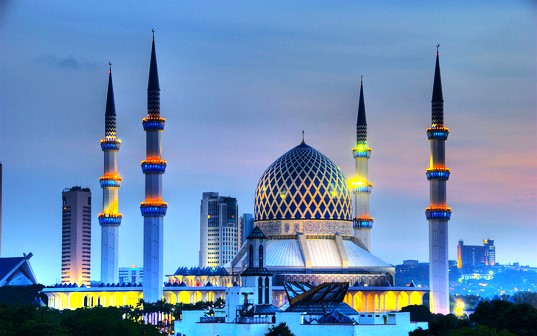
Architecture and Design
The Sultan Salahuddin Abdul Aziz Shah Mosque, an exquisite blend of Malay and Modernist architectural styles, stands as a prominent symbol of faith that can be seen from select spots in Kuala Lumpur on a clear day. It boasts a vast capacity, able to hold 24,000 devotees simultaneously within its expansive 6,782 square meter main prayer hall, crowned by a grand dome.
Sultan Salahuddin Abdul Aziz MosqueA Majestic Emblem of Malaysian Islam
This dome, primarily aluminum, spans 51.2 meters in diameter and soars 106.7 meters high. The mosque’s design is a two-tiered structure, with the upper level dedicated to female worshippers, and is adorned with a blue wool carpet featuring geometric patterns.
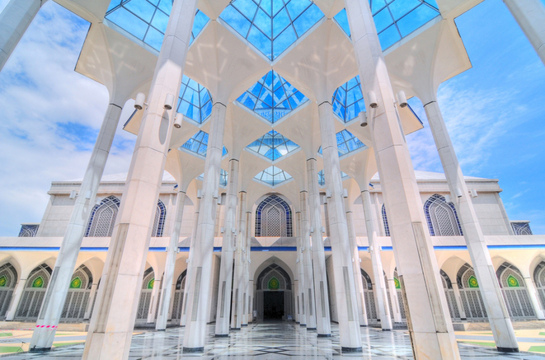
Each corner of the mosque is marked by towering minarets, reaching 142.3 meters into the sky, while the mosque itself covers 15,051 square meters, set amidst 35 acres of lush gardens. The essence of Malay and Islamic design is woven throughout the mosque’s aesthetic, with elegant khat (Arabic calligraphy) by Egyptian artist Shiekh Abdel Moneim Mohamed Ali El Sharkawi gracing the dome’s interior and various wall sections. Intricate aluminum grilles decorate the entrances, windows, and walls, complemented by blue stained glass that casts a tranquil blue glow inside, promoting a serene atmosphere. The high ceilings feature crisscrossing patterns of red balau and ramin wood panels, and the dome’s exterior is adorned with enamel-baked steel panels etched with Quranic verses.
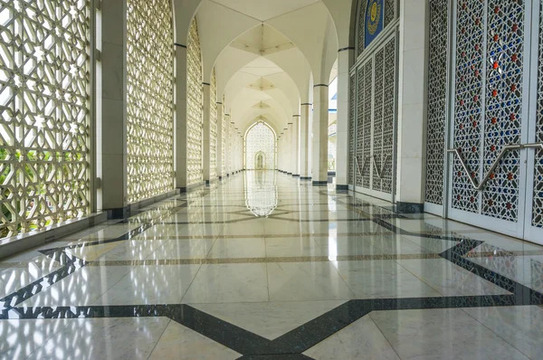
The mosque’s main prayer hall is one of the world’s largest air-conditioned and carpeted spaces, spanning two floors. The complex also includes a gallery on the second floor, while the ground floor houses administrative offices, conference rooms, a library, reception, and lecture rooms. Overlooking the mosque is the Garden of Islamic Arts, a beautifully landscaped area inspired by the Quranic concept of Paradise.
Read: Masjid al-Quba: The First Mosque of Islam
Role and Significance
The Sultan Salahuddin Abdul Aziz Mosque serves as more than just a place of worship; it is a cultural landmark and a symbol of national pride. As one of the largest mosques in Southeast Asia, it plays a pivotal role in promoting religious tolerance and understanding in Malaysia.
Read: Jameh Mosque of Isfahan: A UNESCO World Heritage Site
Beyond its religious significance, the mosque serves as a hub for community activities, educational programs, and charitable initiatives. It embodies the principles of compassion, unity, and social responsibility advocated by Islam, fostering a sense of belonging and solidarity among Malaysians of diverse backgrounds.
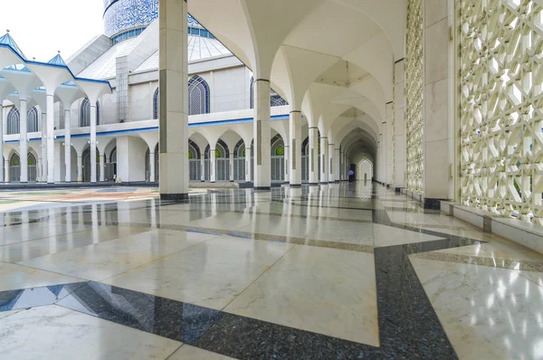
Contributors and Builders:
The construction of the Sultan Salahuddin Abdul Aziz Mosque was made possible through the collective efforts of architects, engineers, and craftsmen dedicated to realizing the vision of blending Islamic tradition with modernity. The late Sultan Salahuddin Abdul Aziz Shah, a devout leader and patron of the arts, played a pivotal role in overseeing the mosque's construction, ensuring that it reflected the values and aspirations of the Malaysian people.
Read: Unveiling the Nasir ol Molk Mosque's Enchantment
Importance in Muslim Society
In the tapestry of Malaysian society, the Sultan Salahuddin Abdul Aziz Mosque occupies a central place, serving as a spiritual sanctuary and a symbol of unity. It attracts worshippers from near and far, offering them a space to connect with their faith and find solace amidst the hustle and bustle of daily life.
Moreover, the mosque serves as a beacon of Islamic culture and heritage, inviting visitors to explore the rich traditions and values that define Malaysia's identity. Its architectural splendor and serene ambiance inspire awe and reverence, leaving a lasting impression on all who visit.
Read: Jama Masjid: A Symbol of Islamic Heritage and Culture in India
Conclusion
As we marvel at the grandeur of the Sultan Salahuddin Abdul Aziz Mosque, we are reminded of the enduring legacy of Islamic civilization and the profound impact of faith on the human spirit. Its towering minarets and azure dome stand as a testament to Malaysia's commitment to preserving its cultural heritage and fostering religious harmony.
In the tranquil confines of this sacred sanctuary, worshippers find solace, seekers find wisdom, and visitors find inspiration. The Sultan Salahuddin Abdul Aziz Mosque transcends the boundaries of religion and nationality, inviting all to bask in its beauty and embrace the values of compassion, tolerance, and unity.
As we reflect on the significance of this architectural masterpiece, let us heed the call to bridge divides and cultivate understanding in an increasingly interconnected world. In the shadow of the Sultan Salahuddin Abdul Aziz Mosque, we find not only a symbol of Malaysia's past but also a beacon of hope for its future.



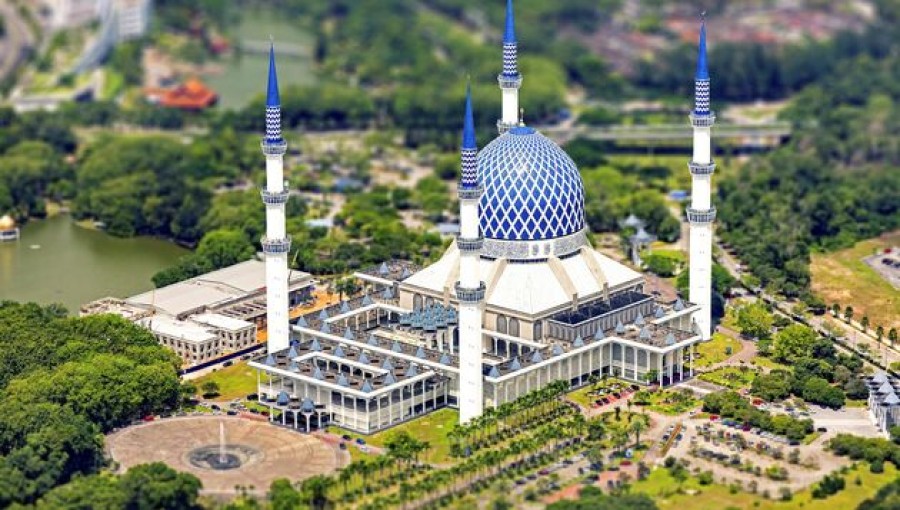



























Comment: